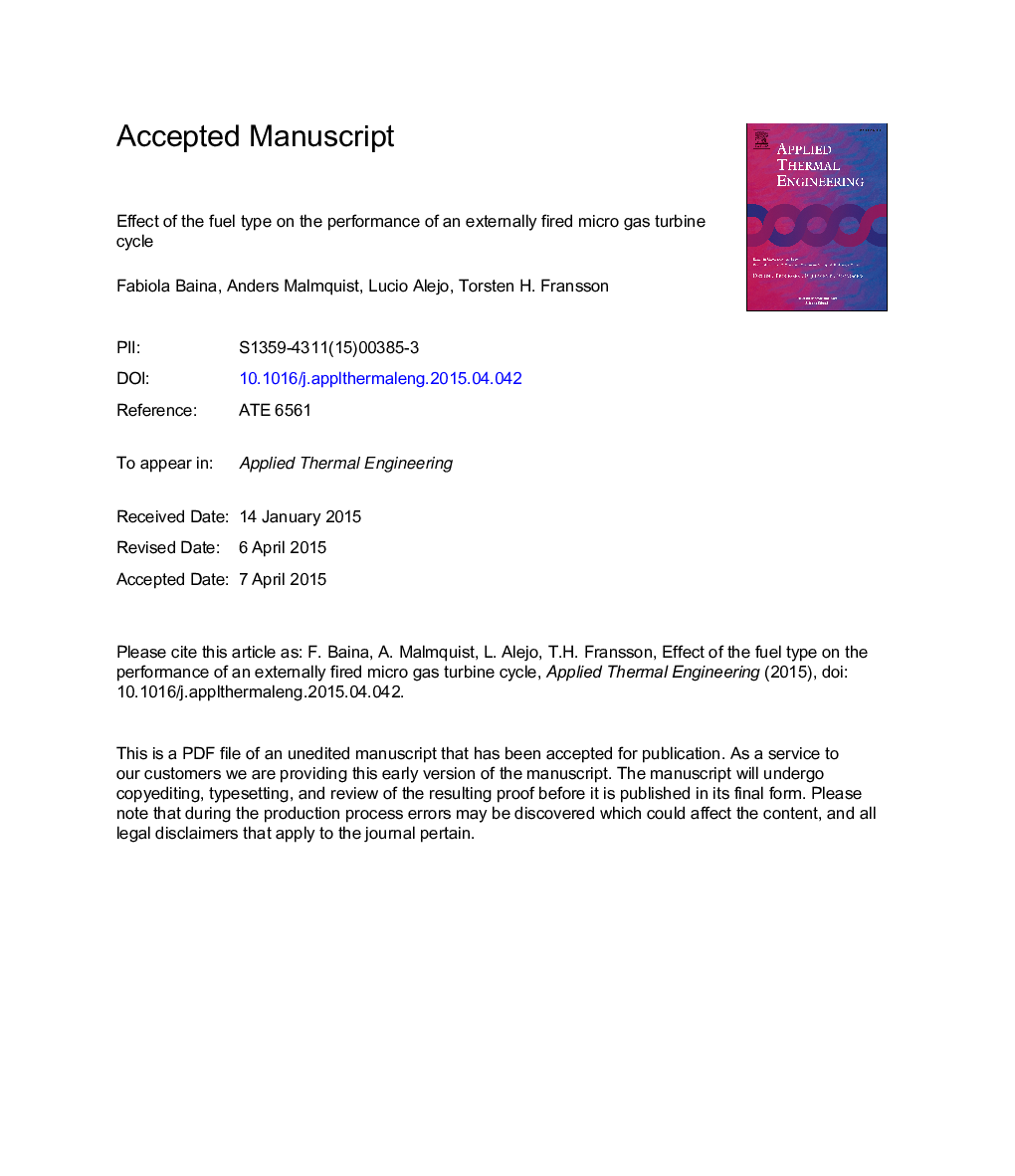| کد مقاله | کد نشریه | سال انتشار | مقاله انگلیسی | نسخه تمام متن |
|---|---|---|---|---|
| 645214 | 1457141 | 2015 | 42 صفحه PDF | دانلود رایگان |
عنوان انگلیسی مقاله ISI
Effect of the fuel type on the performance of an externally fired micro gas turbine cycle
ترجمه فارسی عنوان
تأثیر نوع سوخت بر عملکرد یک چرخه توربین گاز میکرو گاز خارج شده
دانلود مقاله + سفارش ترجمه
دانلود مقاله ISI انگلیسی
رایگان برای ایرانیان
کلمات کلیدی
توربین گازی خارج از محفظه، گاز مایع بیومس، خروجی برق، دمای ورودی سوخت، ارزش حرارت پایین، دمای گاز دودکش، افت فشار،
موضوعات مرتبط
مهندسی و علوم پایه
مهندسی شیمی
جریان سیال و فرایندهای انتقال
چکیده انگلیسی
Externally fired gas turbines open the possibility of using fuels of lower quality than conventional gas turbines and internal combustion engines. This is because in externally fired gas turbines, the flue gases heat the compressed air in a high temperature heat exchanger. This heat exchanger can more easily deal with contaminants present in the flue gases. In this regard, the configuration of externally fired gas turbines represents an interesting option for biomass gasification gas. The contaminants and low heating value (LHV) of this fuel have made it difficult to find a conversion technology for heat and power generation. For this reason, it is important to study the influence of biomass derived gas as fuel on the performance of this system and consider the effects of the contaminants in the high temperature heat exchanger. This is studied in this work through simulations using Aspen Plus and Matlab. The test data of an externally fired micro gas turbine prototype was used to validate the simulation. The fuel considered was biomass gasification gas with varying concentrations of benzene 100, 10 and 1 g/Nm3 (hereafter named m100, m10, and m1 respectively). Additionally, mixtures of biomass derived gas and methane were studied for 10 and 50% of the thermal power of the combustor. The fuel inlet temperature to the combustor varied from 150 °C to 750 °C in order to represent the fuel gas after removal of particles by a cyclone and a filter. The results showed that the electrical power output increases when high fuel inlet temperatures to the combustor are used. Additionally, although it would be expected that fuels with higher LHV (lower heating value) show higher temperatures and higher output power, this does not always occur because of the composition of the fuels and their respective flue gas temperatures. The addition of methane does not have a large effect on the electrical power output. For a fixed temperature limit in the heat exchanger, the composition of the fuels does not play an important role. However, high fuel inlet temperatures to the combustor show slightly higher efficiencies. Additionally, the effect on the electrical power output of increasing the pressure drop as a result of increased thickness of deposit materials in the heat exchanger was analyzed.
ناشر
Database: Elsevier - ScienceDirect (ساینس دایرکت)
Journal: Applied Thermal Engineering - Volume 87, 5 August 2015, Pages 150-160
Journal: Applied Thermal Engineering - Volume 87, 5 August 2015, Pages 150-160
نویسندگان
Fabiola Baina, Anders Malmquist, Lucio Alejo, Torsten H. Fransson,
